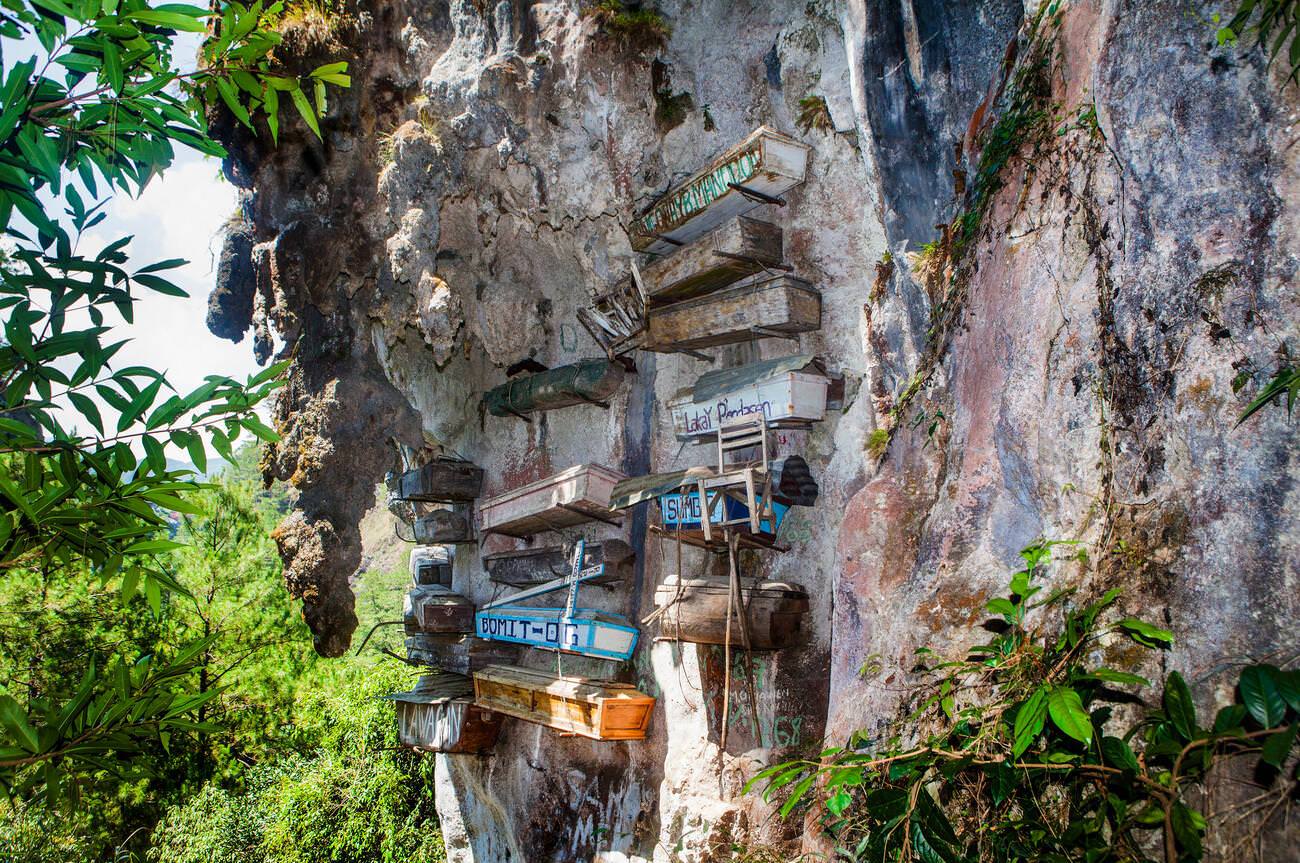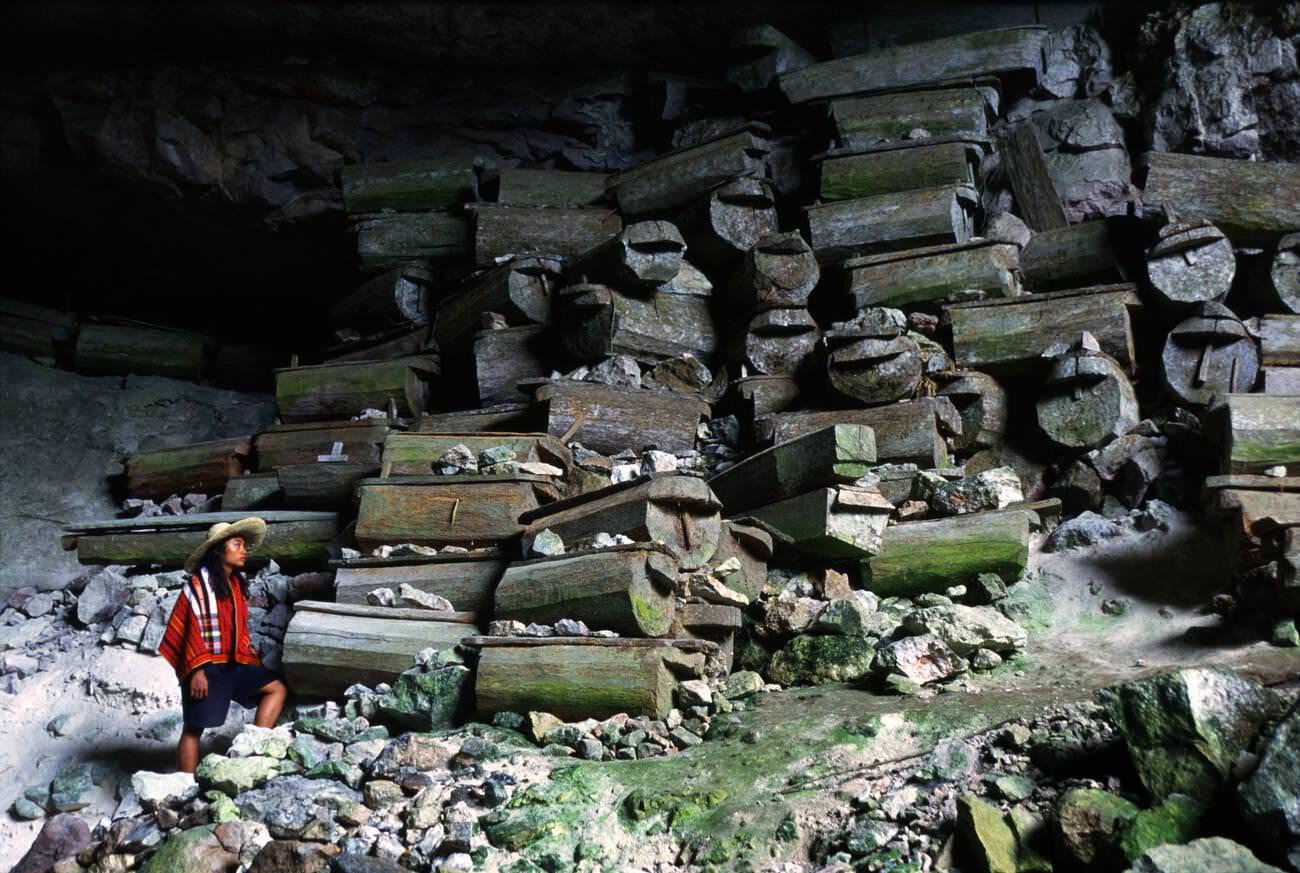Nestled in the verdant mountains of the northern Philippines lies Sagada, a quaint town in the Mountain Province, known for its serene beauty, captivating caves, and, most notably, its enigmatic hanging coffins. This unique funerary practice, carried out by the indigenous Kankanaey people, presents a fascinating blend of cultural beliefs, respect for the dead, and ancient traditions that have captivated both locals and tourists alike. While the exact origins of this practice remain shrouded in mystery, it is believed to be centuries old, offering a window into the pre-colonial cultures of the Philippines.
The Tradition of Hanging Coffins
The hanging coffins of Sagada are literally suspended in time and space, placed underneath natural overhangs along the limestone cliffs that dominate the area’s landscape. These coffins are either nestled within natural rock crevices or affixed to the cliffside on projecting beams, slotted into holes carved out of the rock. This method of ‘burying’ the dead high above the ground is steeped in the belief that such an elevation brings the departed closer to the ancestral spirits and the spiritual realm.
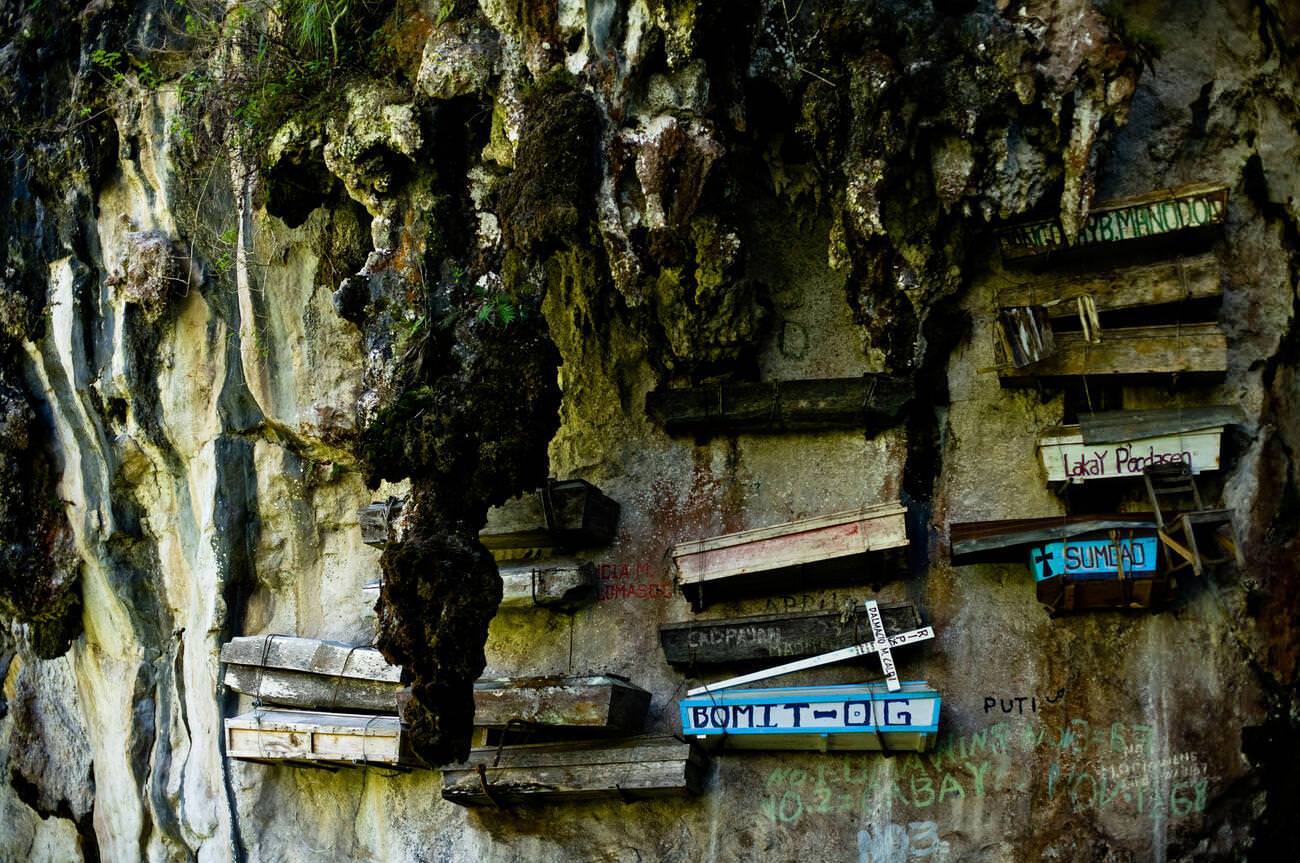
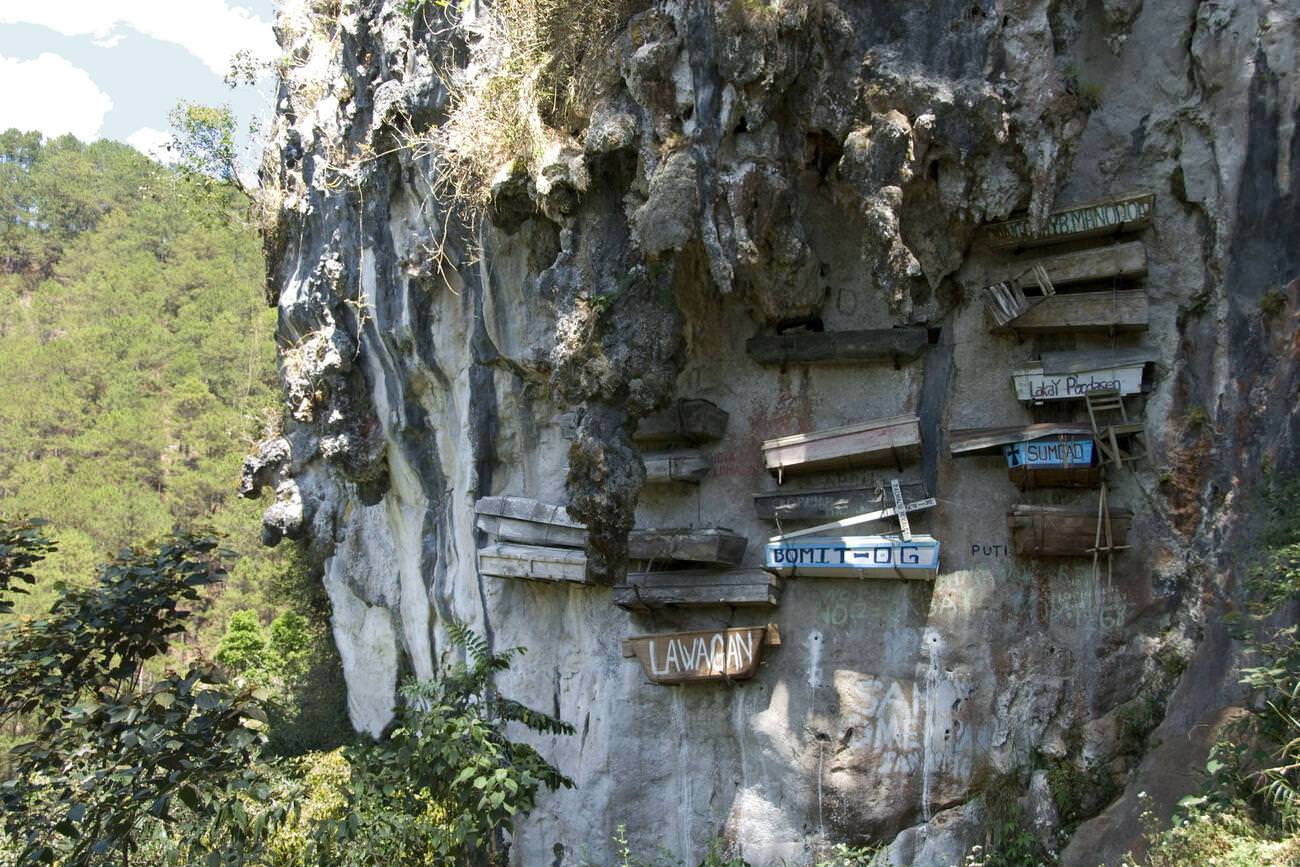
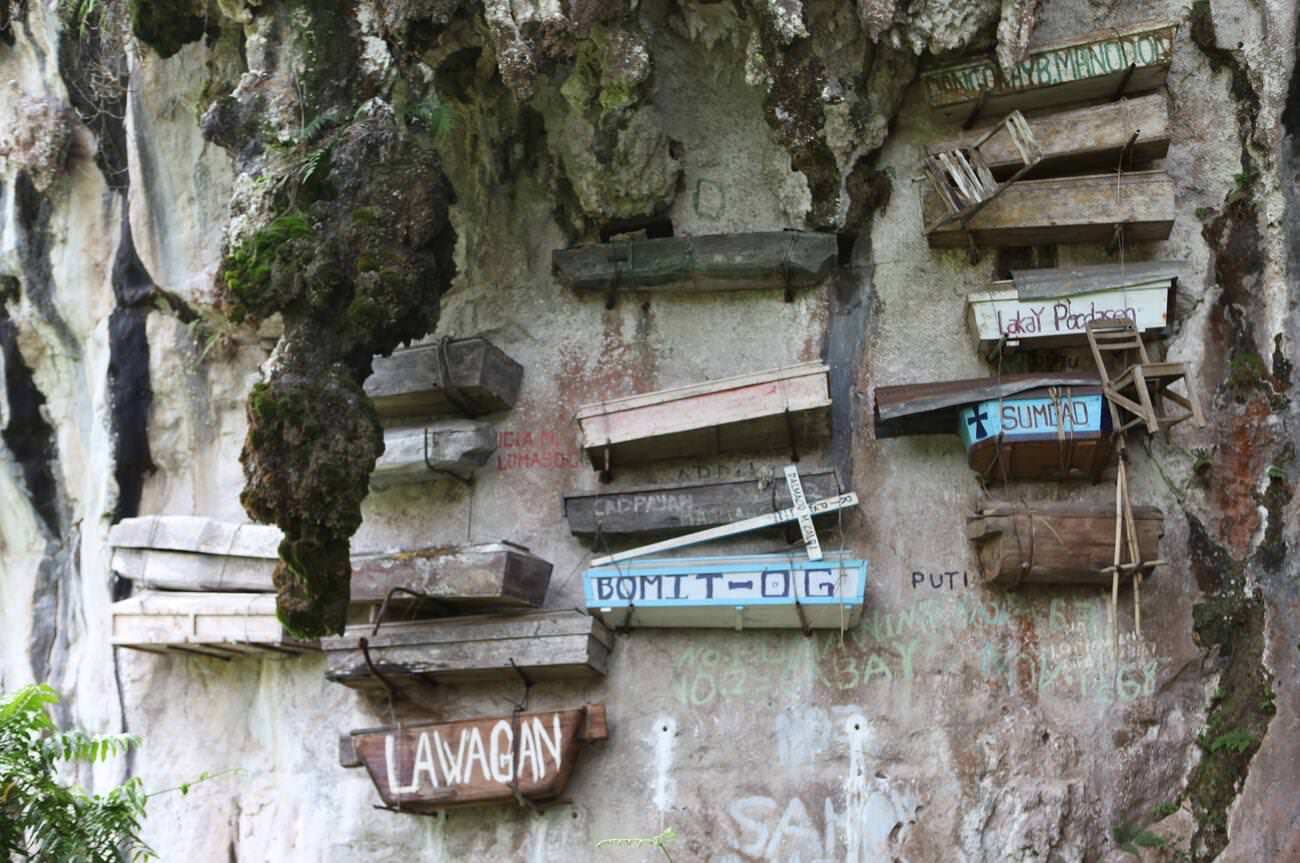
The practice reflects a profound fear of being buried in the ground, where water seepage could cause the body to rot, and threats from wild animals or headhunters could disturb the final resting place. By suspending the coffins high on the cliff face, the Kankanaey ensured that their loved ones were safe, both physically and spiritually.
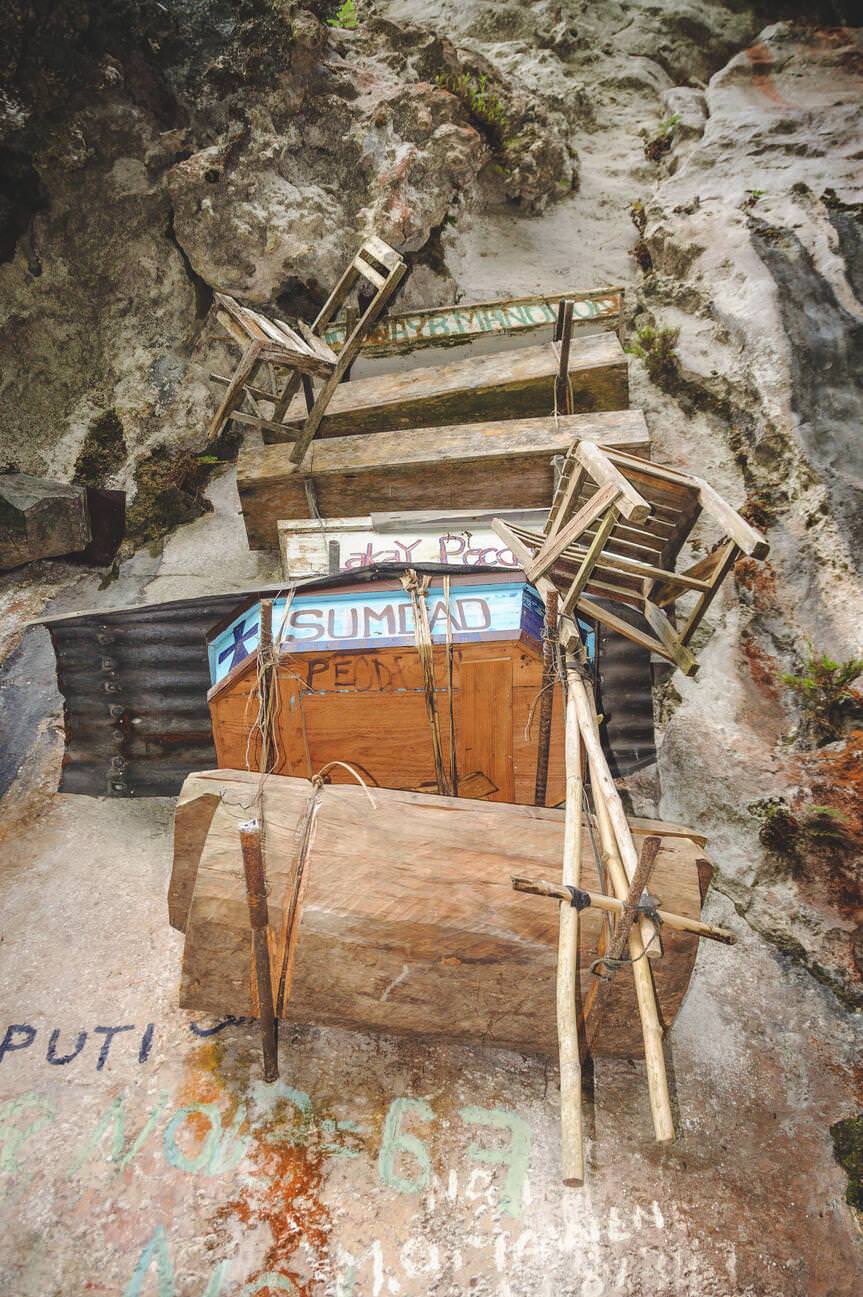
Symbolism and Beliefs
The coffins themselves are notably smaller than typical Western coffins, a design dictated by the tradition of placing the deceased in the fetal position before burial. This symbolic gesture signifies a return to the beginning, encapsulating the belief that individuals should exit the world in the same posture they entered it. This tradition, common among various pre-colonial cultures in the Philippines, highlights a cyclical view of life and death.
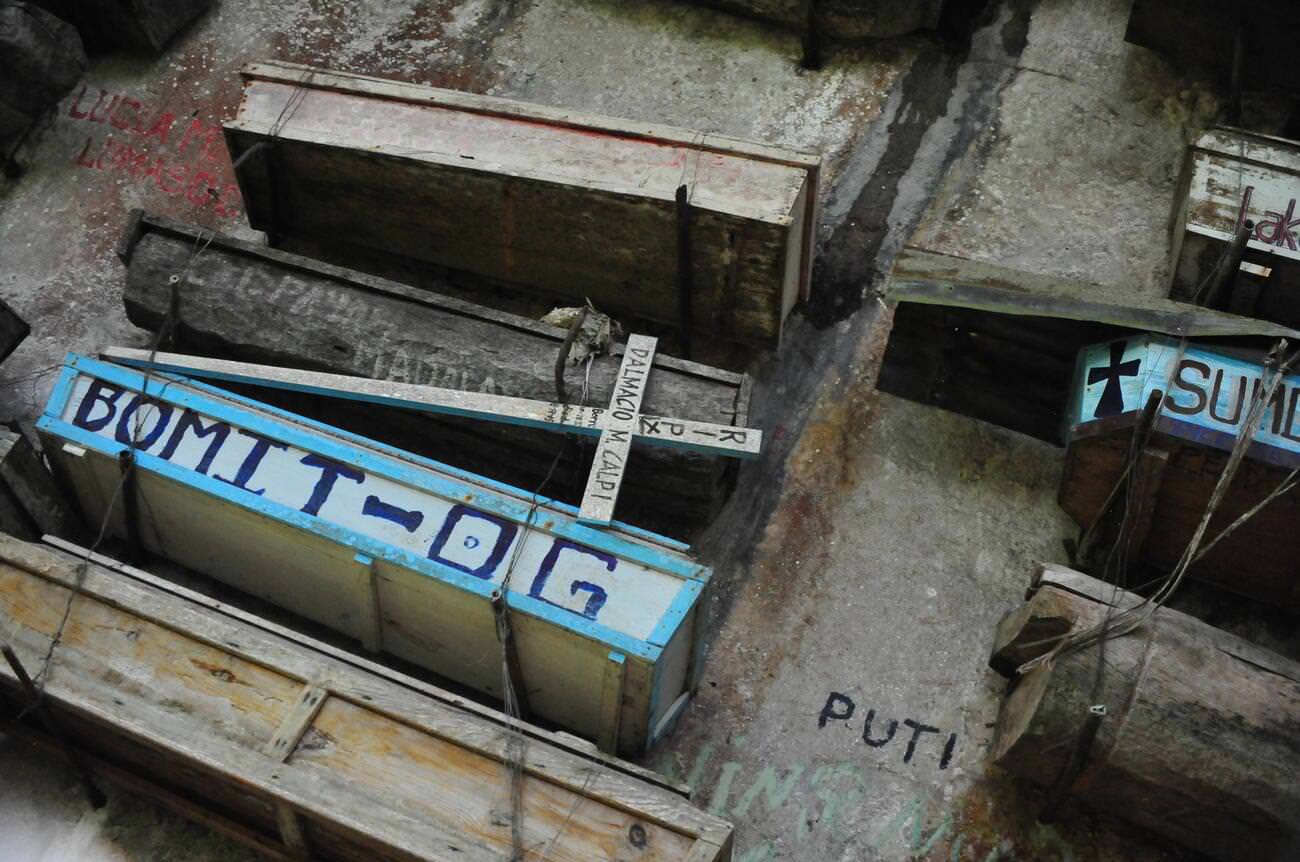
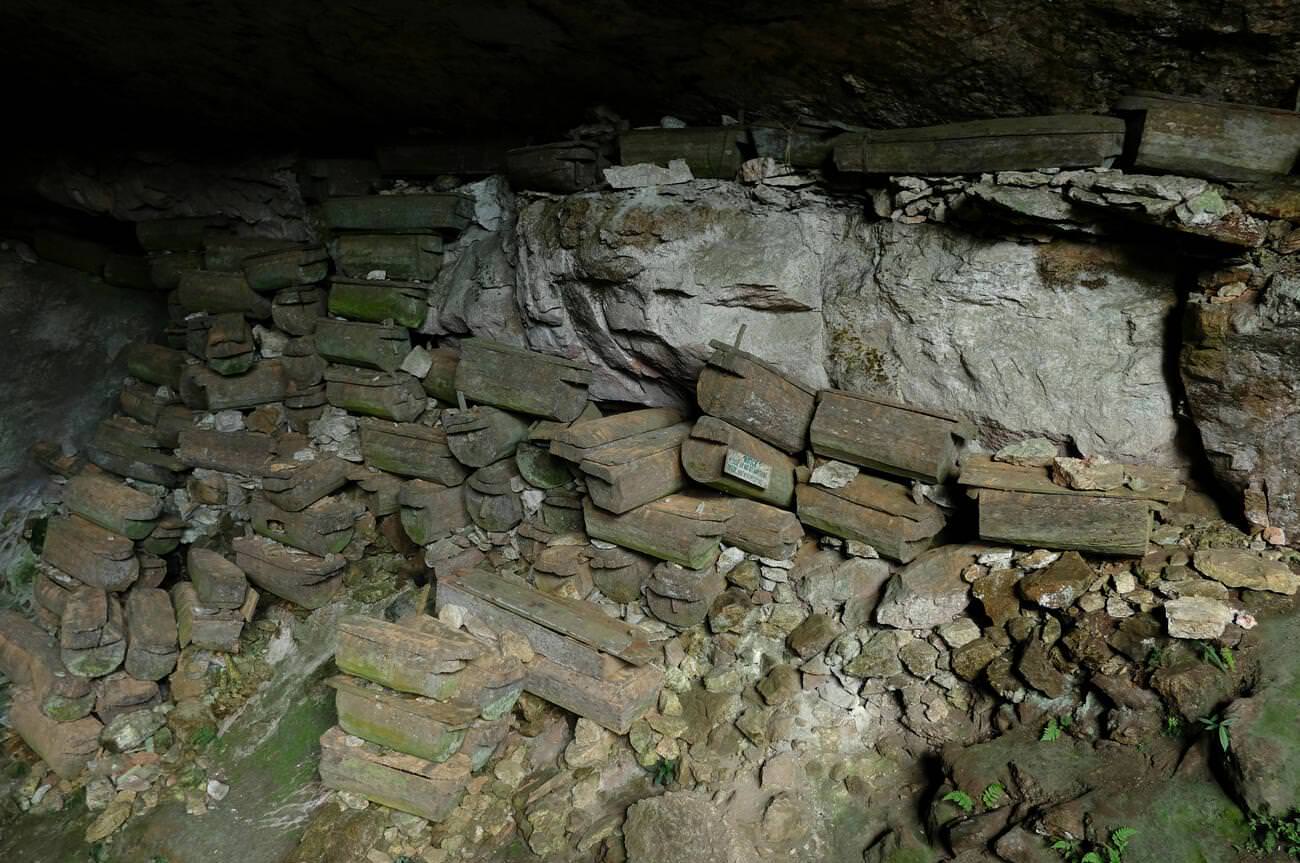
The preparation of the coffin is a deeply personal affair, with the elderly often carving their own coffins out of hollowed logs. In cases where the individual is too weak or ill, this duty falls to their family members. The process of placing the dead into these coffins sometimes involves the breaking of bones to fit the body into the fetal position, underscoring the importance of adhering to tradition, even in death.
The Journey to the Cliffs
The act of transferring the coffin to its final resting place is as significant as the burial itself. The community comes together to honor the dead, carrying the coffin in a procession to the chosen burial site. This communal effort symbolizes the collective respect for the deceased and acknowledges the journey of the soul to the afterlife.
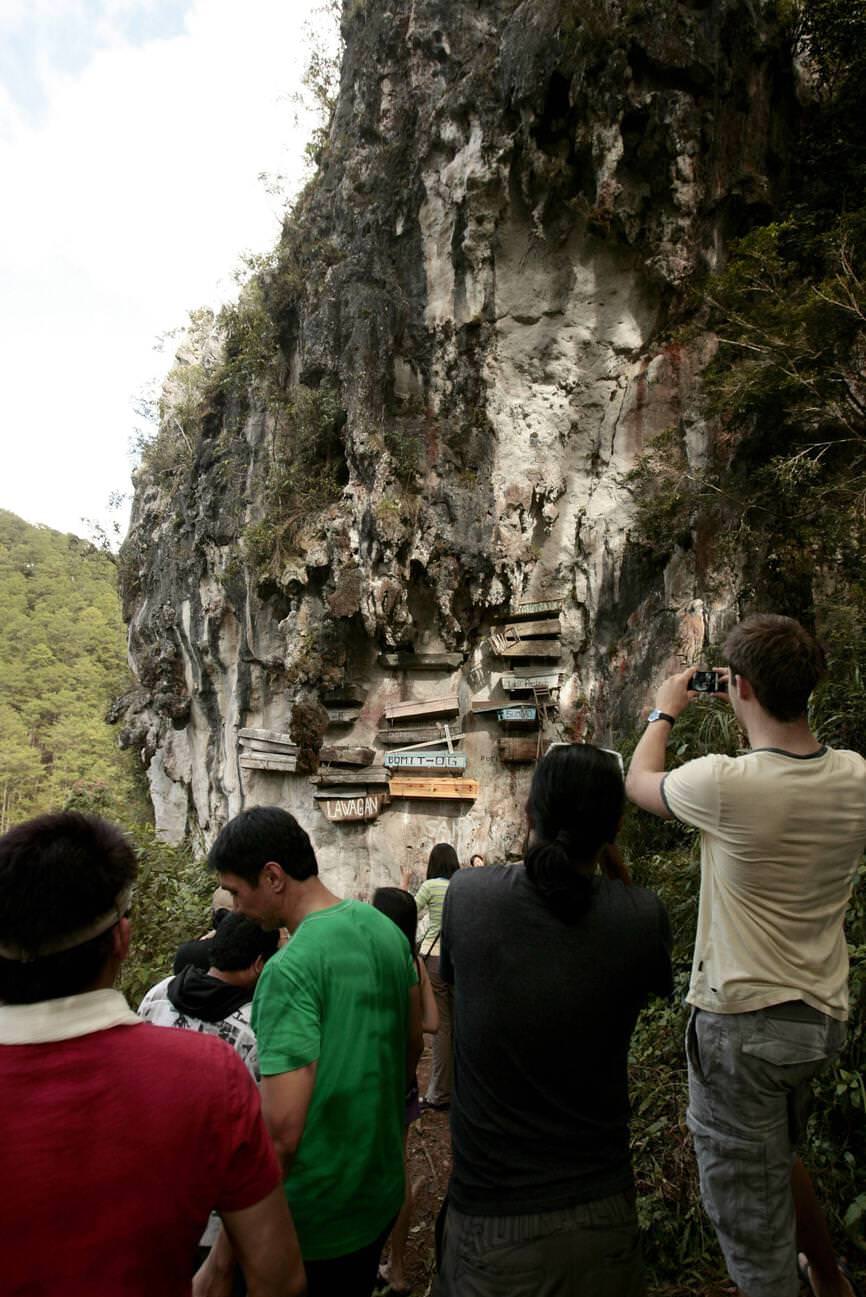
Comparisons with Other Cultures
The practice of aerial burials is not unique to the Philippines. Various cultures around the world have adopted similar methods for sending off their dead, each with its own set of beliefs and customs. For instance, the Tibetan sky burials involve leaving the deceased on mountaintops to be consumed by vultures, believed to release the soul to the heavens. The ancient Bo people of China also practiced hanging coffins, with hundreds of wooden coffins found suspended in cliff faces, a tradition that mirrors the motivations of the Kankanaey for elevation and protection from elements and predators.
These practices, while distinct in execution and cultural context, share underlying themes of respect for the dead, integration with the natural world, and a desire to bridge the gap between the earthly and the spiritual realms. They reflect a universal quest to understand and honor the mystery of death, each culture developing its own rituals to cope with loss and commemorate the departed.
In recent years, Sagada has seen a surge in tourism, drawn by the allure of its natural beauty and the mystique of the hanging coffins. While this attention has brought economic benefits to the region, it also poses challenges in preserving the sanctity of the burial sites and respecting the cultural significance of the tradition. Efforts have been made to balance the needs of the community with the curiosity of visitors, ensuring that tourism is conducted in a manner that is respectful and sustainable.


